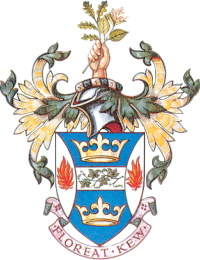Colombia is the third country in the world for plant biodiversity and first in the world for orchid diversity. My interest in Colombia started whilst a first-year Kew Diploma student at RBG, Kew. During that year the theme for the orchid festival was Colombia, offering the chance to discover and appreciate the floristic diversity offered. In 2019 I decided to have my travel scholarship in this country but unfortunately it had to be postponed due to COVID. A few years later, the trip has finally taken place and I am so grateful to the Kew Guild and other supporting institutions for their funding.
Due to its orography and geological history, Colombia is a climatically complex country, offering a wide range of habitats and endemism. Moreover, there are many areas of the country which remain unexplored or not well known, putting Colombia at the forefront of research and botanical/ecological investigations. The aim of the trip was to see as much of Colombia’s diverse habitats within the time and resources available. The benefits, to further develop my understanding of tropical flora, including orchids, and in creating contacts for potential future collection trips.
The trip started with exploration of the Departments of Antioquia, Caldas, Quindio and Tolima and their diverse habitats under the guidance of Saul Hoyos Gomez. After visiting Medellin Botanic Garden, we moved towards Jardin where we hiked through two reserves at the top of the surrounding mountain range (Reserva de las orquideas and Reserva de la Libertad). The abundance of orchids (particularly Pleurothallidinae) and other plants seen there were thanks to Jerry, Daniel and Yanince who are the custodians of these reserves.
We then moved towards Guadualito where Rodriguo Bernal has created a beautiful reserve. Rodriguo also contributed to the development of the palm collection at the Mariposario del Quindio, directed by Hector Favio Manrique, for this reason it was included in the trip. From Guadualito we travelled to a site in Tochecito with the largest population of Ceroxylon quindiuense currently existing in Colombia.
It was in the palm stand in Tochecito that I had the privilege of standing next to the tallest palm in the world (according to Rodrigo’s and Saul’s estimations). This is a specimen of Ceroxylon quindiuense which is 60 m tall and most likely, was already alive when Alexander Von Humboldt visited the area during his exploration of South America between 1799-1804.
In the last part of the trip, I visited the botanic garden near Cartagena, guided by Maria Paula Contreras who is the Head of Horticulture and Science, before returning to Bogota, where Mauricio Bernal guided me through their botanic garden.

View of the Andes Occidental Cordillera from La Reserva de la Libertad

Ceroxylon quindiuense at the Tochecito Palm stand
